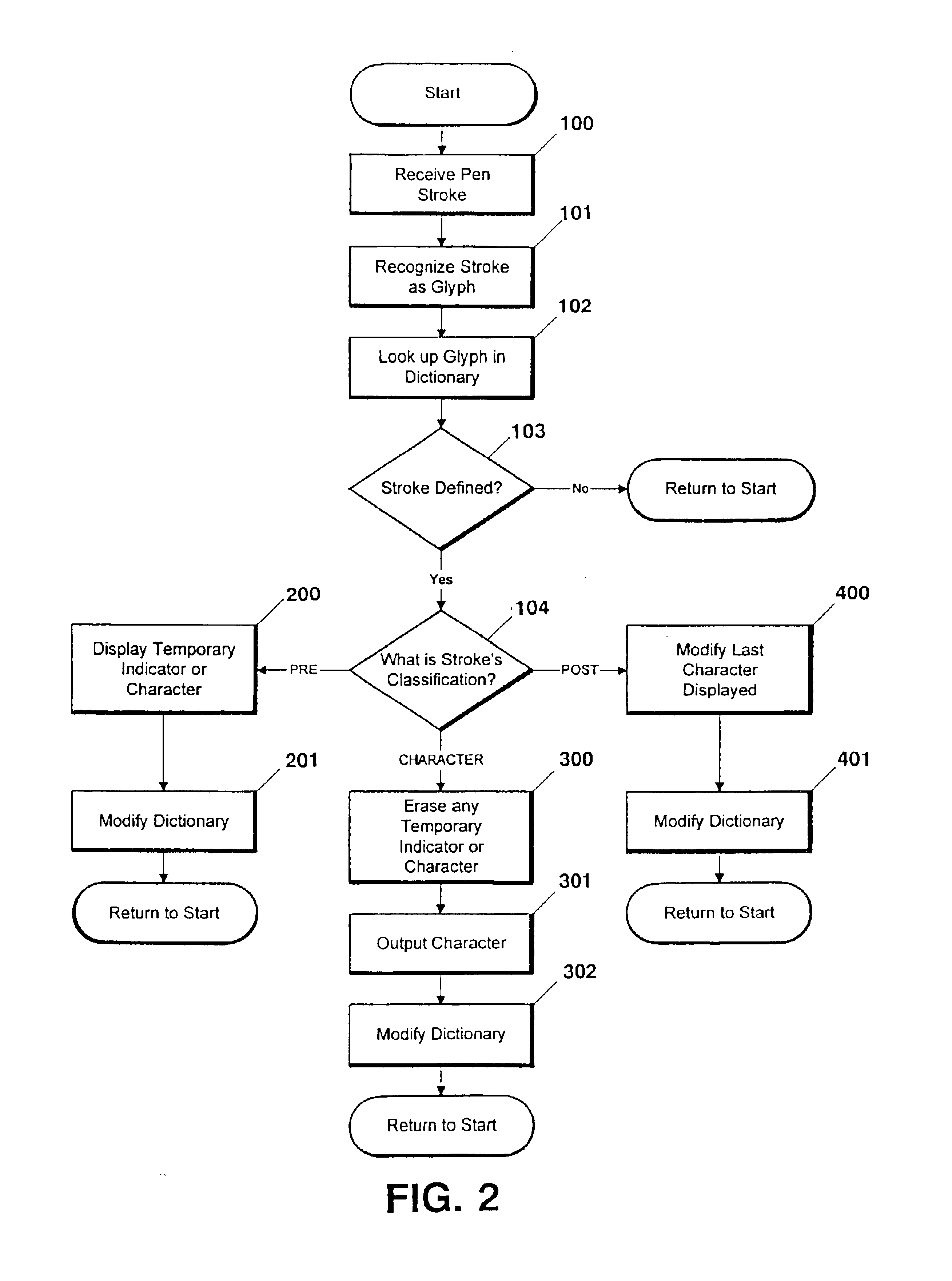Multiple pen stroke character set and handwriting recognition system with immediate response
a multi-pen stroke, handwriting technology, applied in the field of computer input systems, can solve the problems of inability to recognize handwritten, inability to always be suitable for data, and insufficient storage space for ink, and achieve the effect of easy learning
- Summary
- Abstract
- Description
- Claims
- Application Information
AI Technical Summary
Benefits of technology
Problems solved by technology
Method used
Image
Examples
Embodiment Construction
Throughout this description, the preferred embodiment and examples shown should be considered as exemplars, rather than as limitations on the present invention.
Overview
The present invention is preferably implemented as a computer program operating on a pen-based computer system such as the “Zoomer” and “Newton” products described above. The computer program is stored on a storage media or device readable by a computer, and configures and operates the computer when the storage media or device is read by the computer, the computer being operated to determine, recognize, classify, and sometimes display handwritten strokes. However, as is known in the art, the logic functions of such a computer program may be implemented as an electronic system, such as a firmware programmed, microcoded, or hardwired logic system.
FIG. 2 is a flow chart that describes the basic process of the invention. Operation starts at step 100, where a pen stroke is received. A stroke is a movement by a user of a pe...
PUM
 Login to View More
Login to View More Abstract
Description
Claims
Application Information
 Login to View More
Login to View More - R&D
- Intellectual Property
- Life Sciences
- Materials
- Tech Scout
- Unparalleled Data Quality
- Higher Quality Content
- 60% Fewer Hallucinations
Browse by: Latest US Patents, China's latest patents, Technical Efficacy Thesaurus, Application Domain, Technology Topic, Popular Technical Reports.
© 2025 PatSnap. All rights reserved.Legal|Privacy policy|Modern Slavery Act Transparency Statement|Sitemap|About US| Contact US: help@patsnap.com



